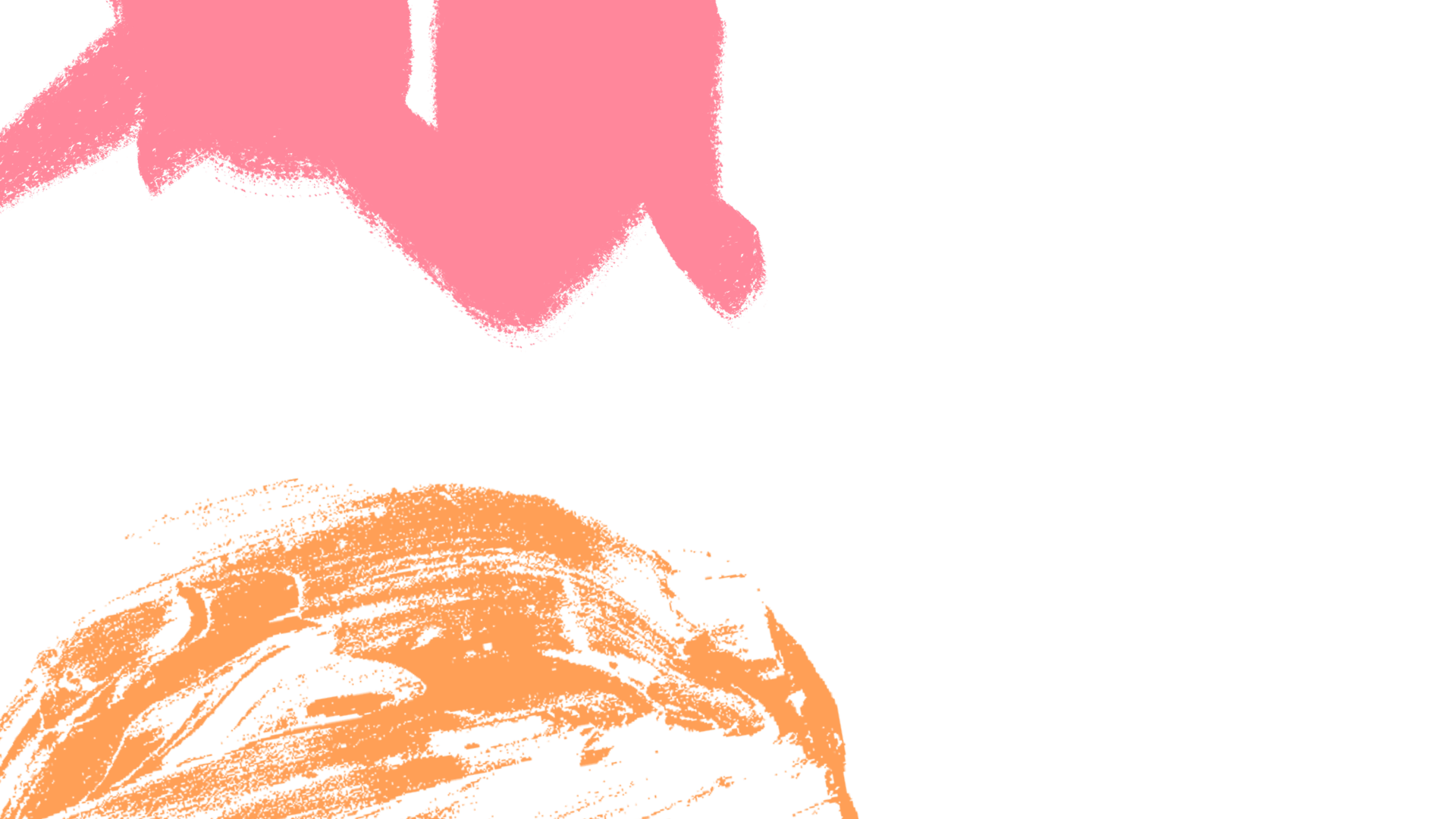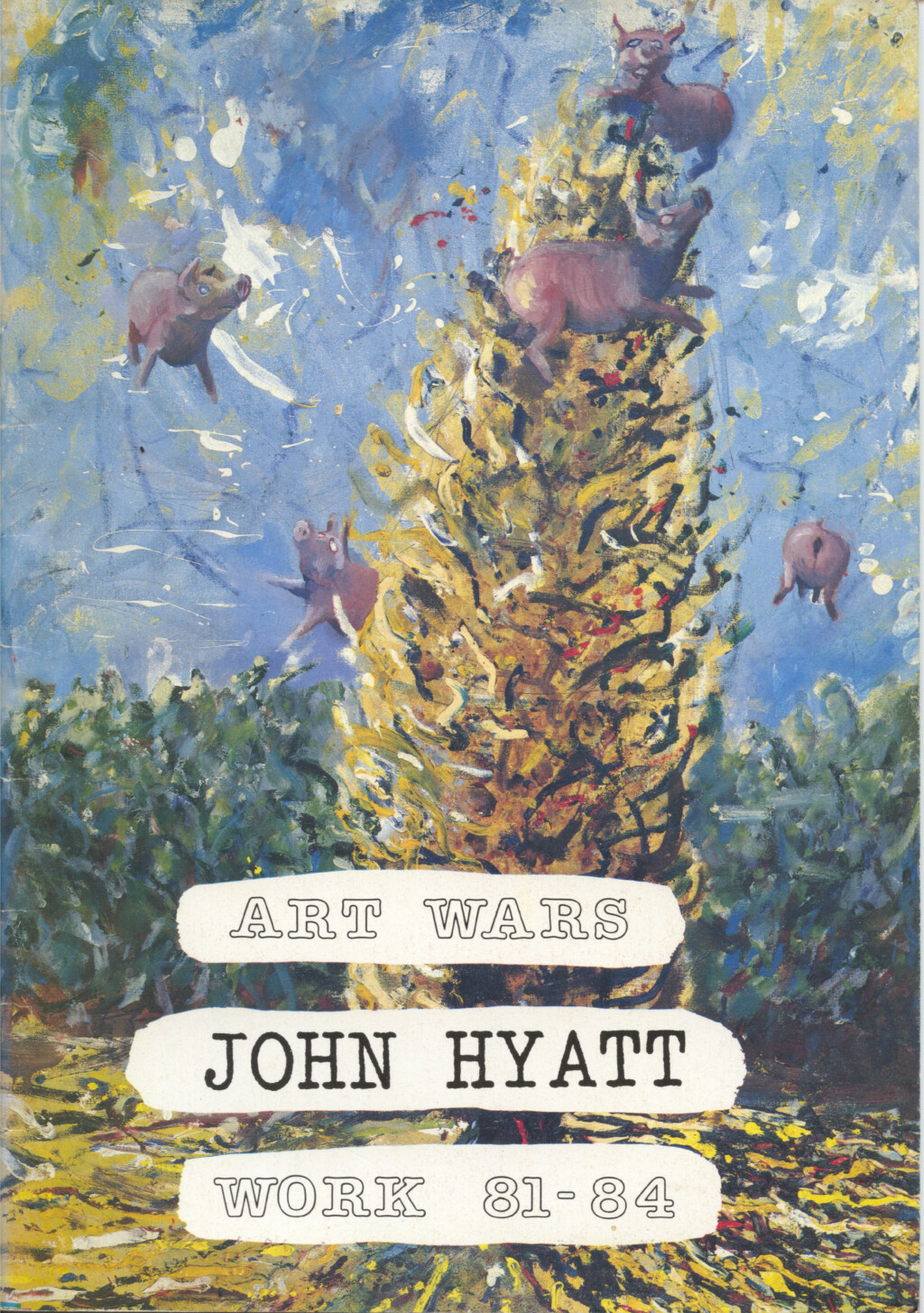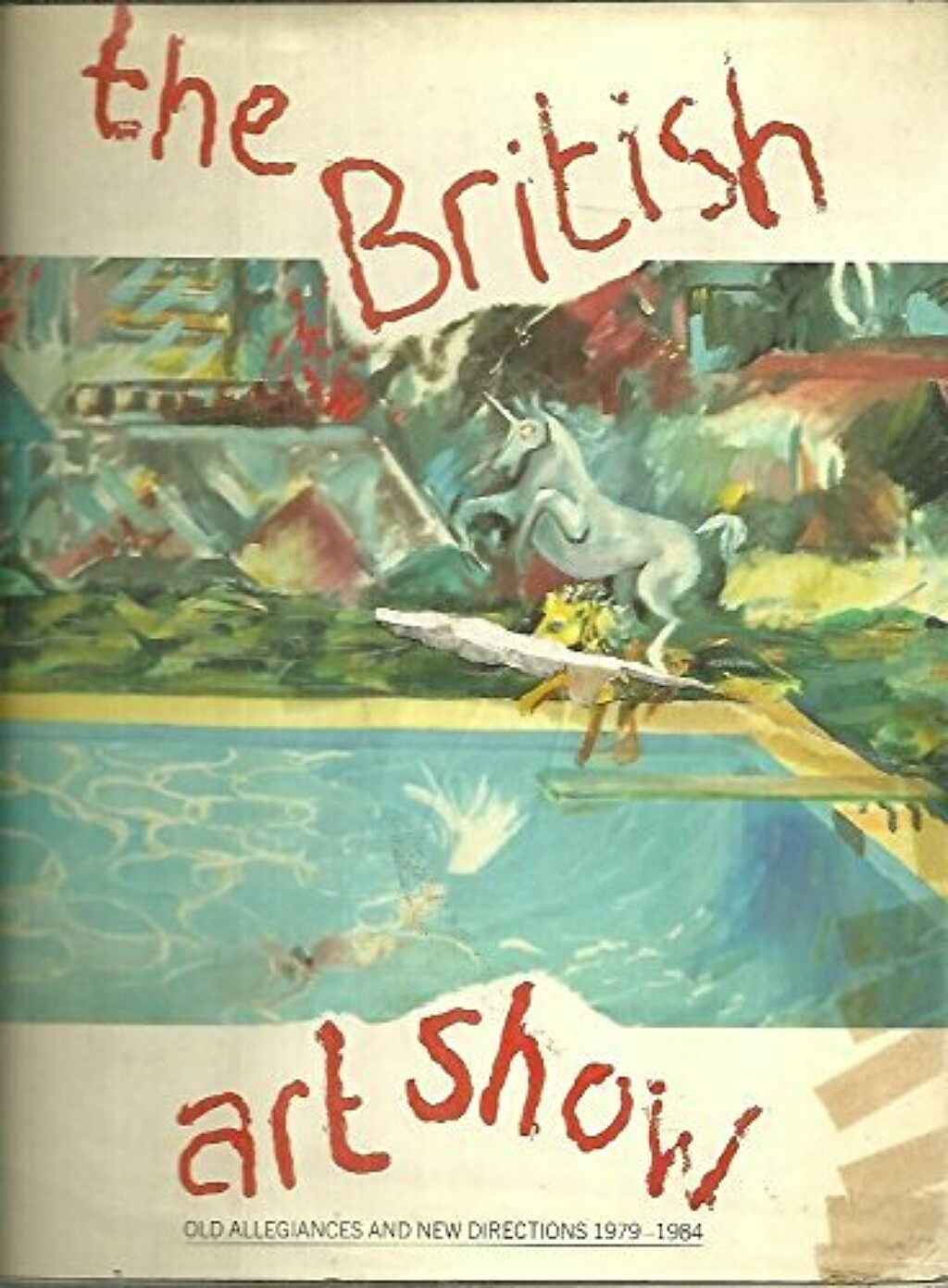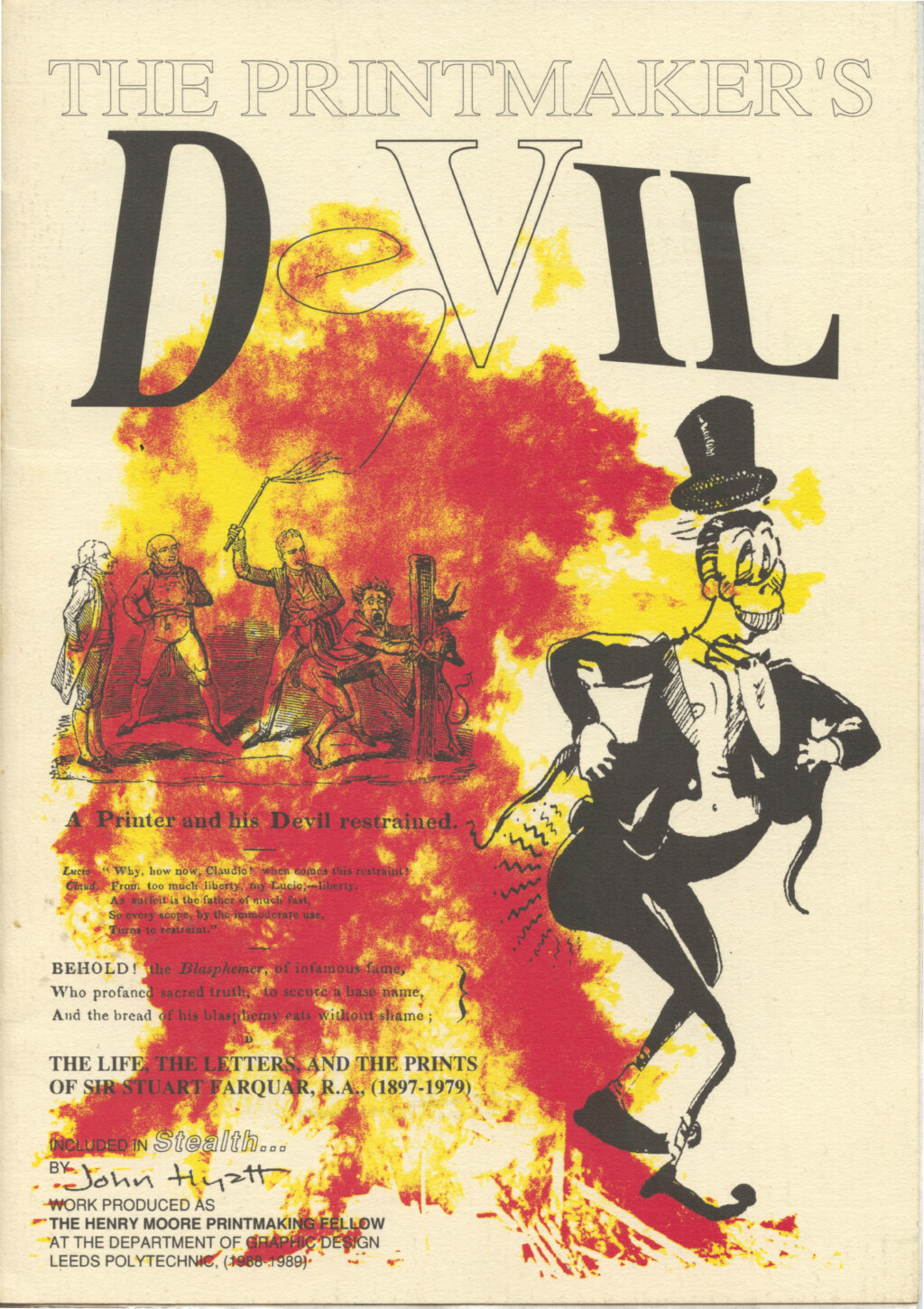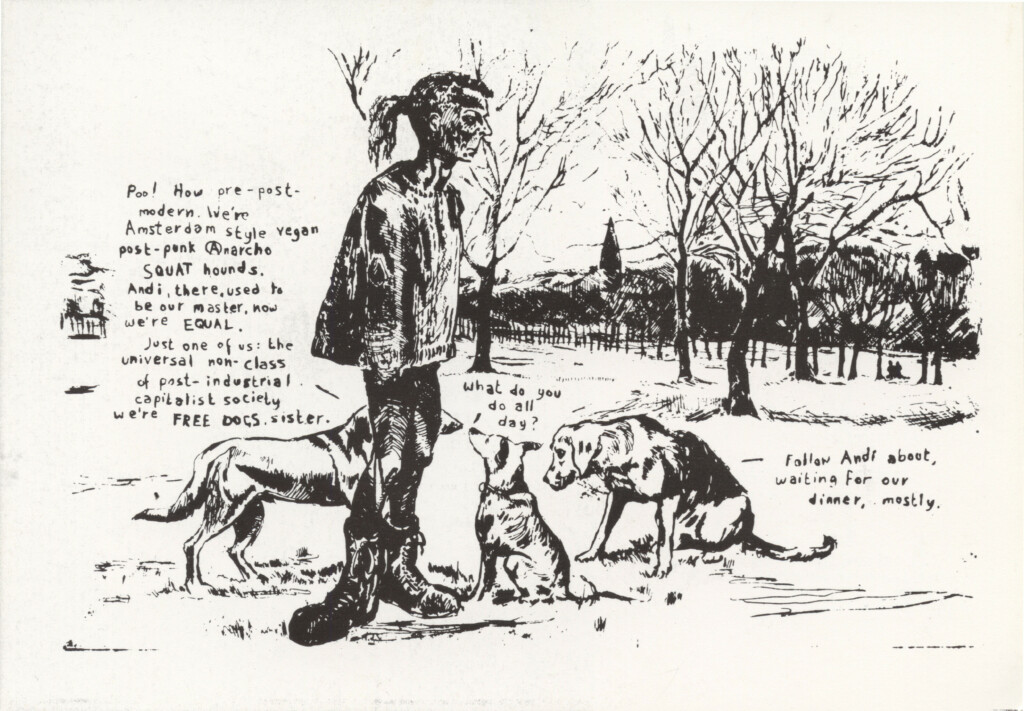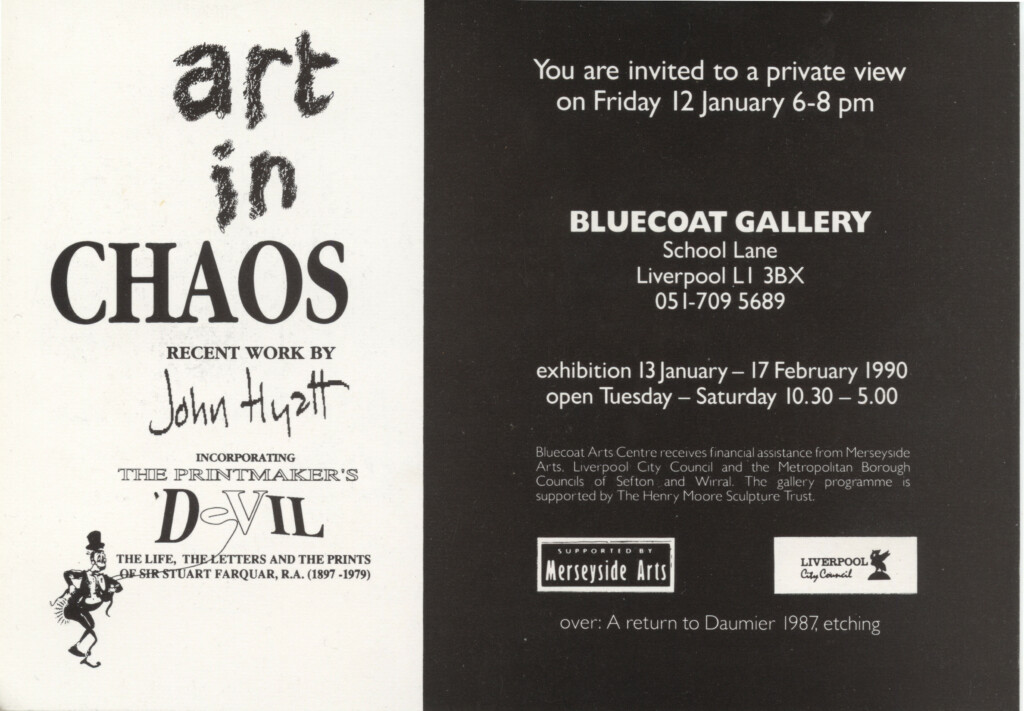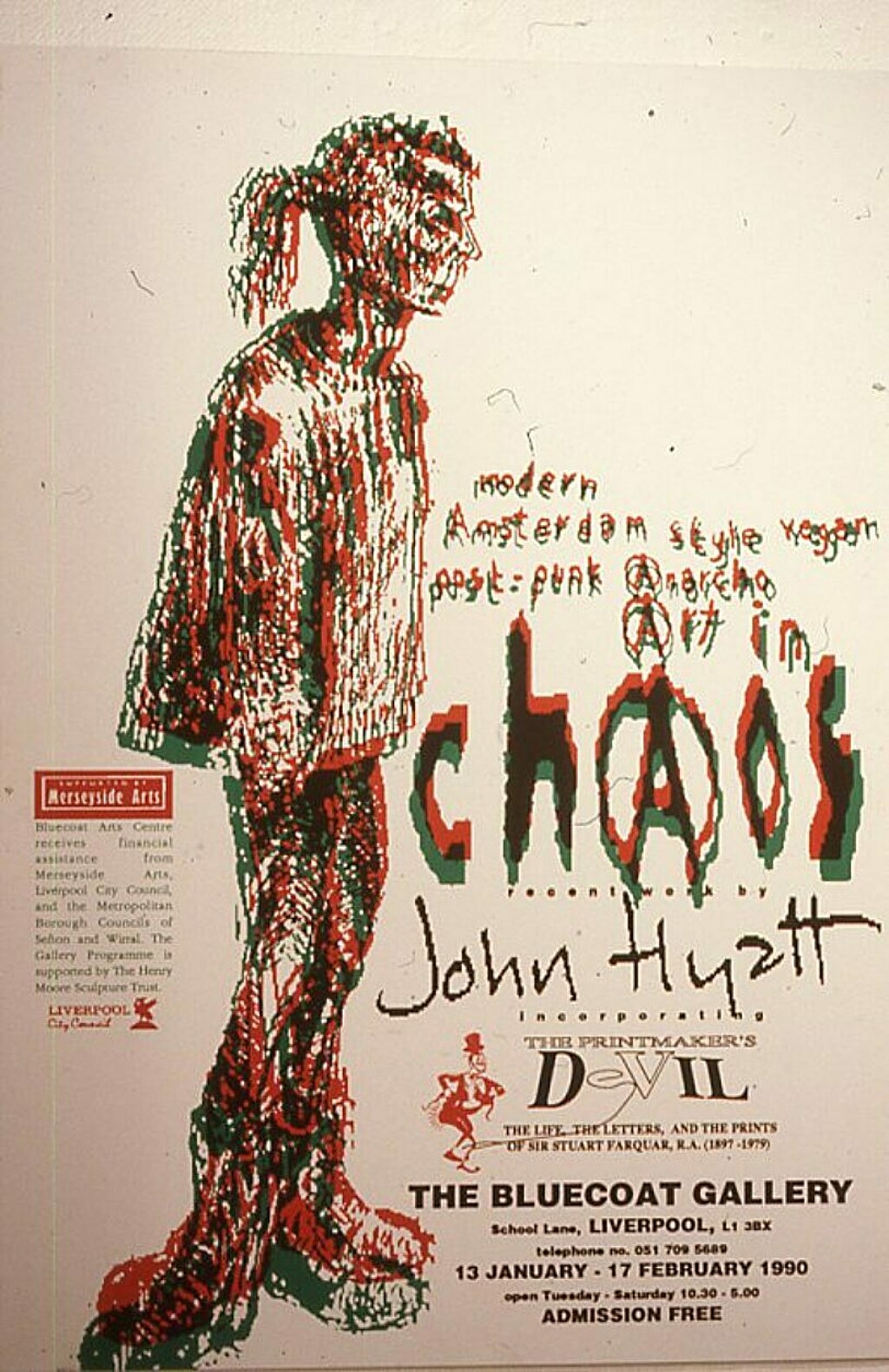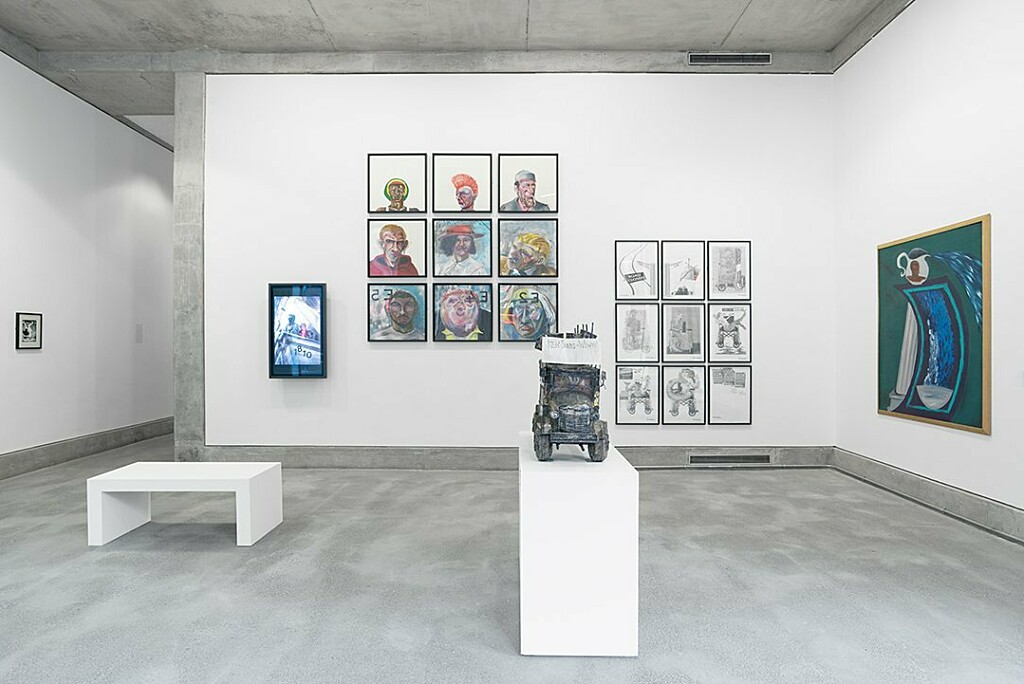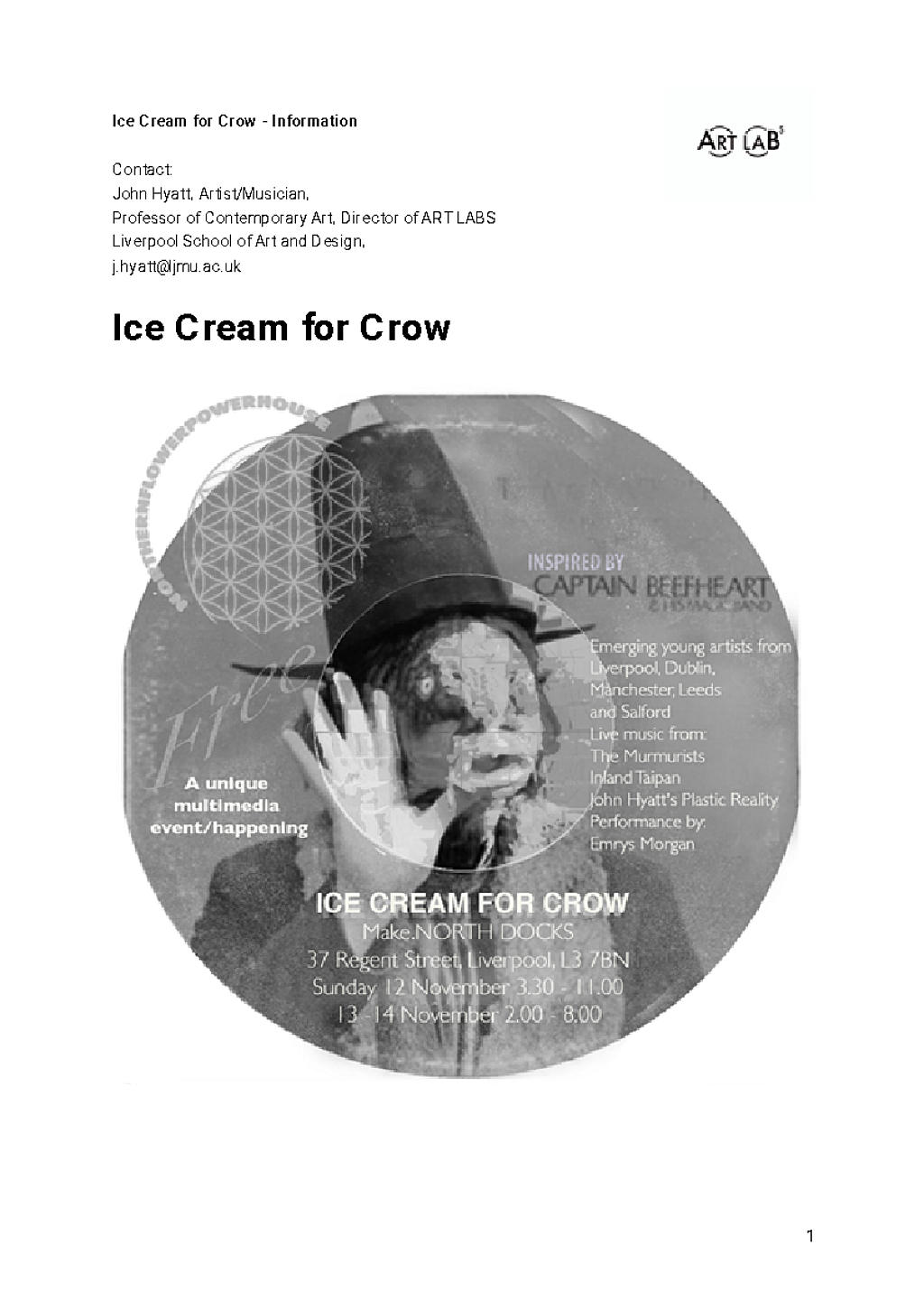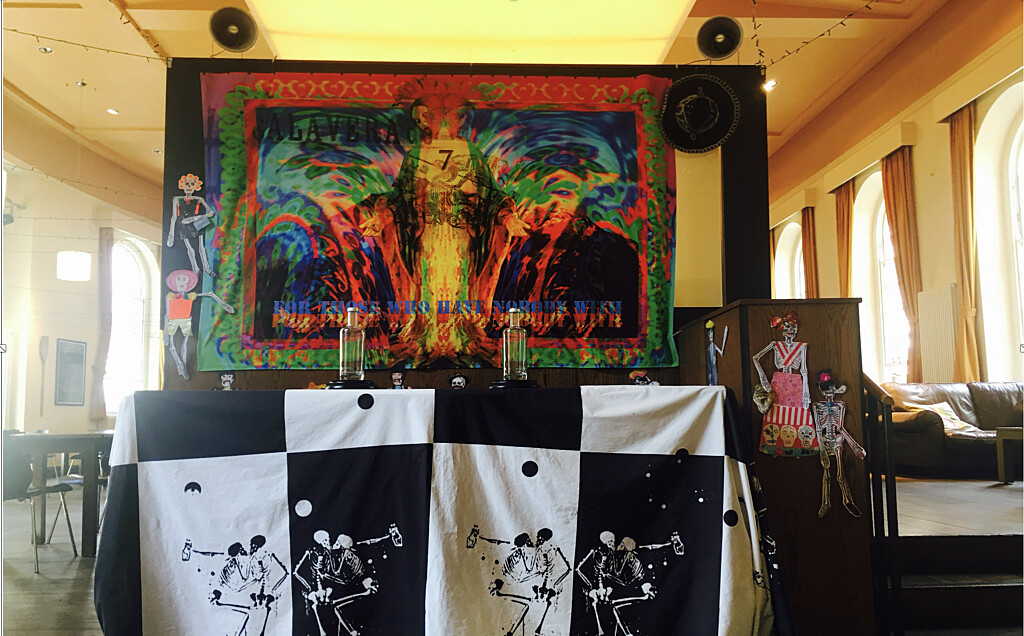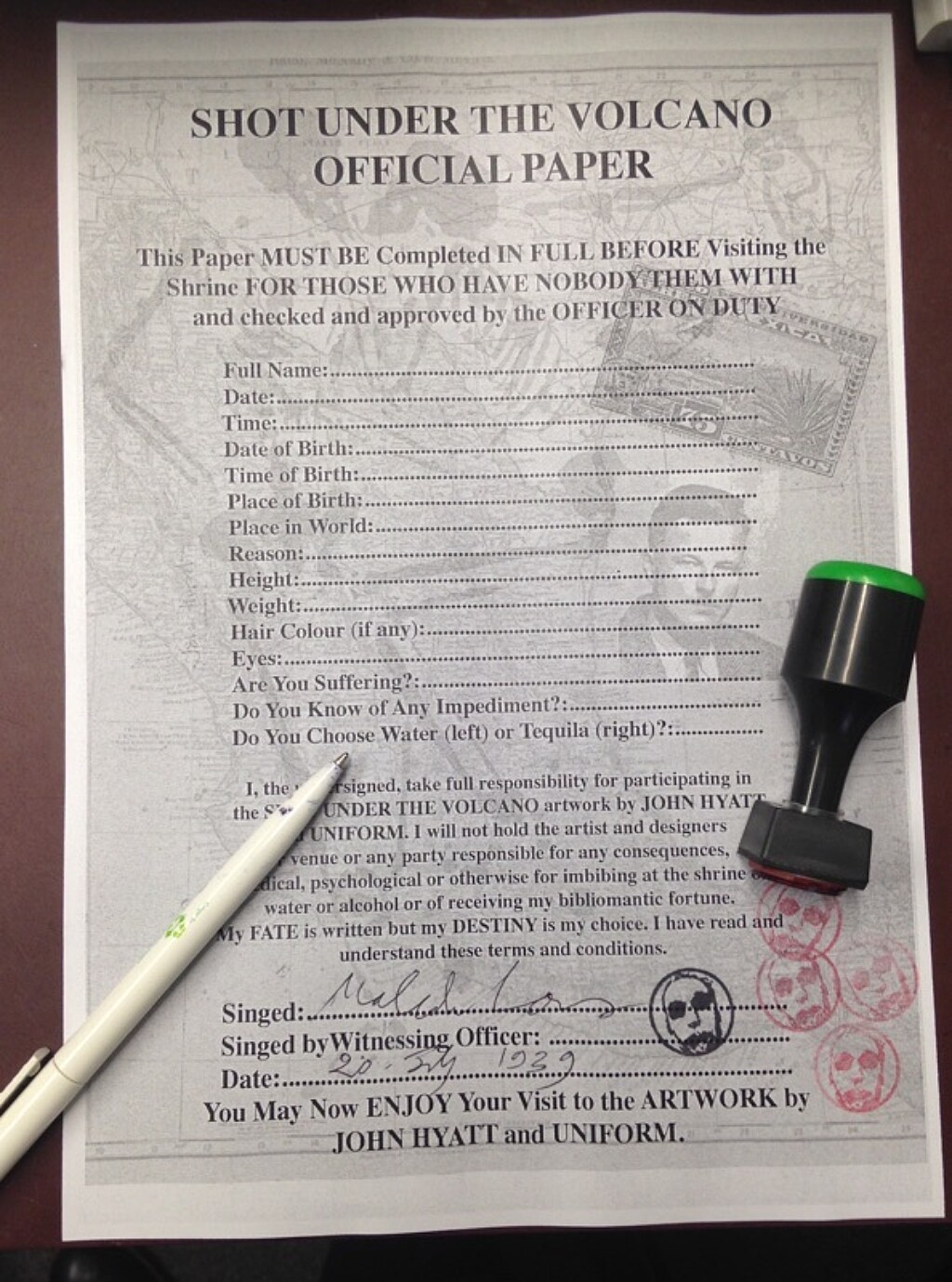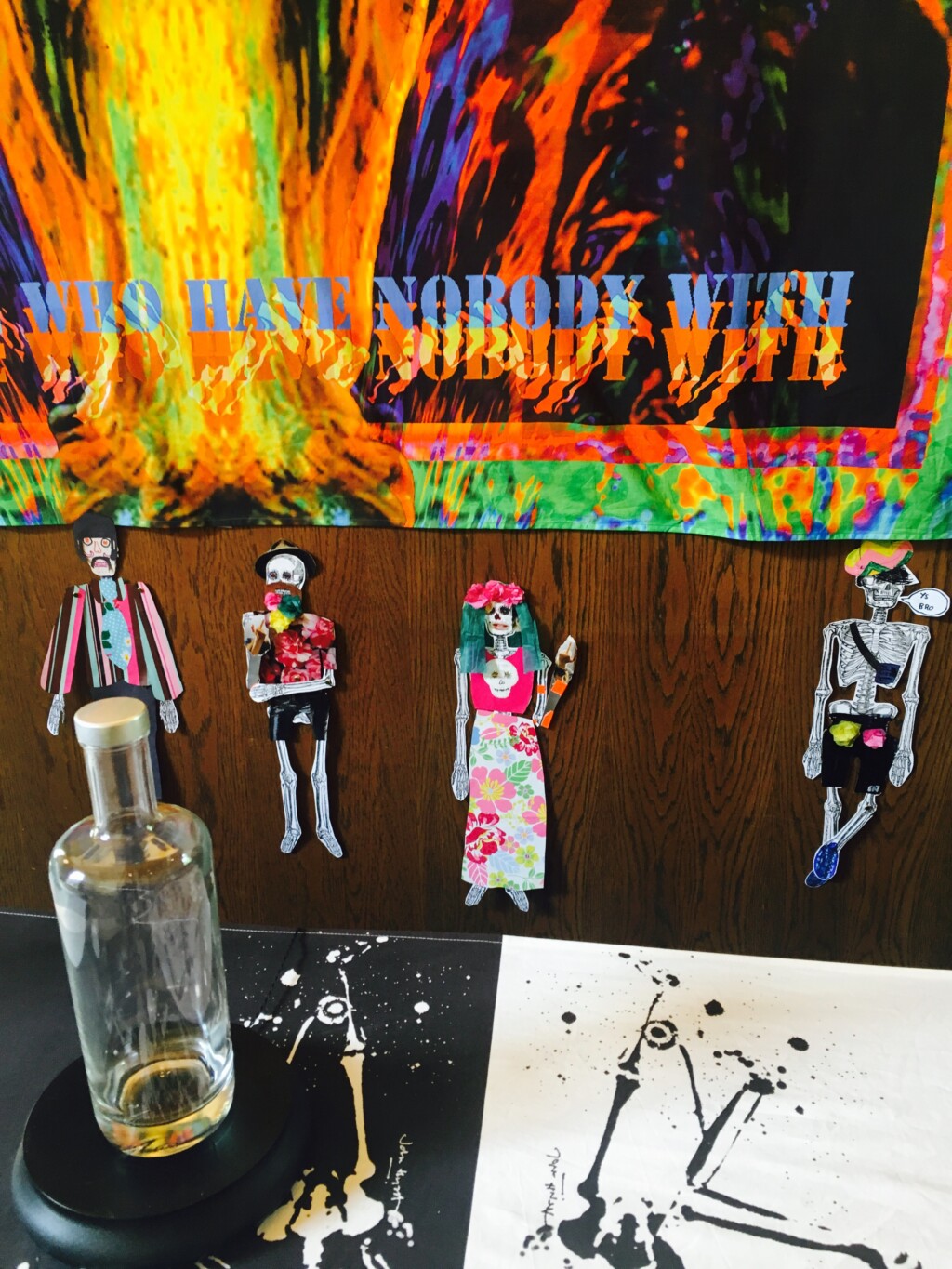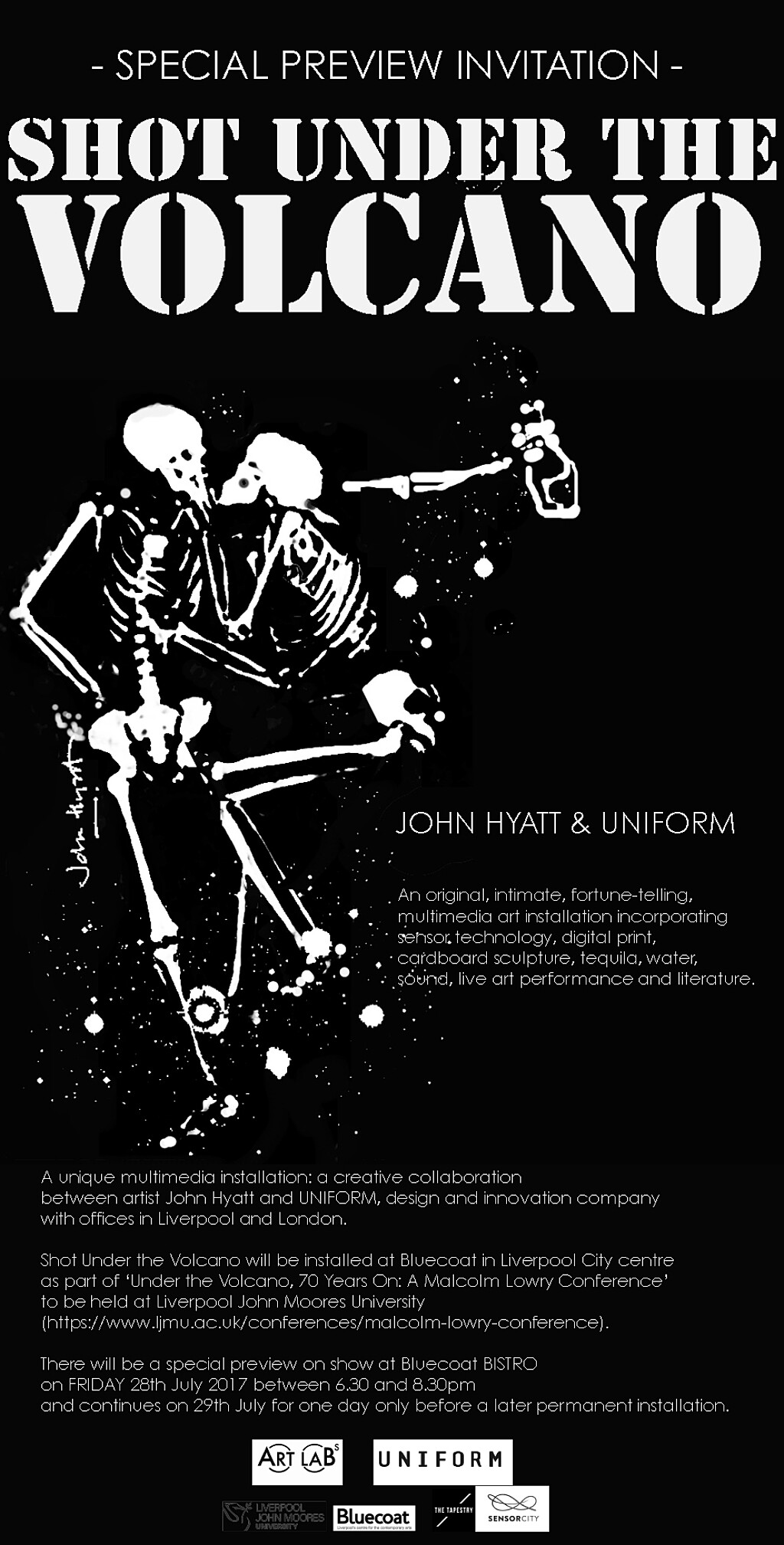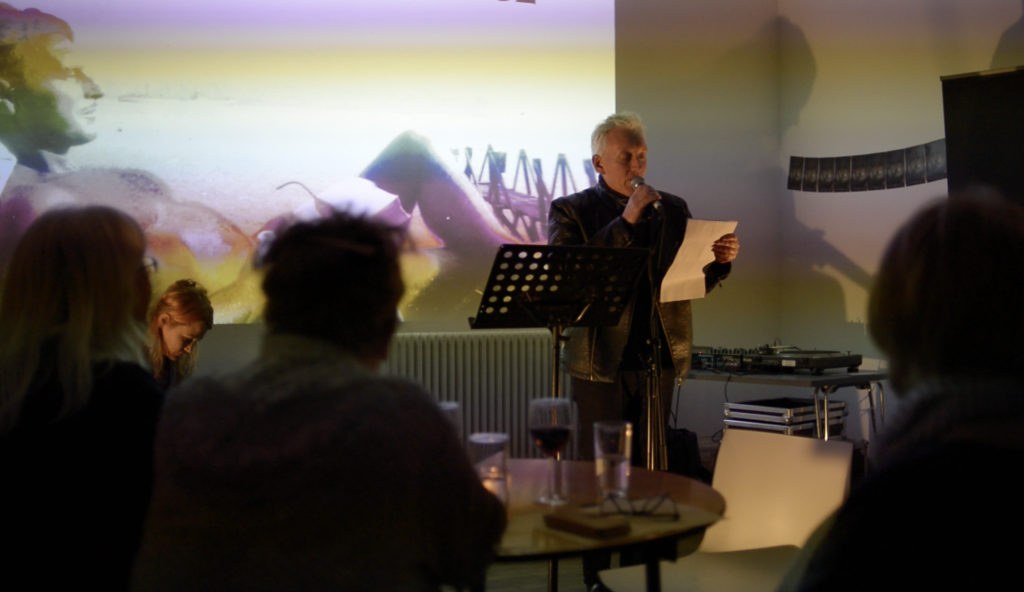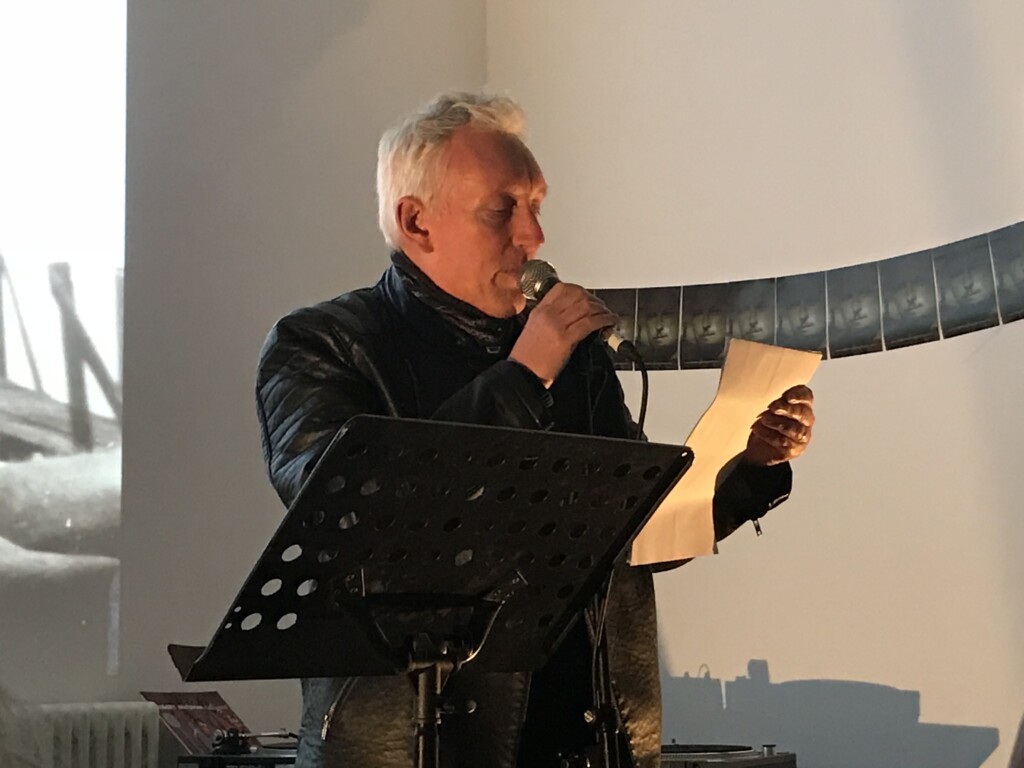An appreciation of John Hyatt by Bryan Biggs, Bluecoat’s Director of Cultural Legacies
The Bluecoat was saddened by news of the death last December of John Hyatt, an extraordinary artist, musician, thinker and educator who had a long relationship with the arts centre through exhibiting, performing and participating in activities that took in visual art, literature and music.
John moved to Merseyside with his wife Liz in 2016 when he was appointed Professor of Fine Art at Liverpool John Moores University, following a distinguished career in art and design higher education, notably at Manchester Metropolitan University where be established Miriad (Manchester Institute for Research and Innovation in Art and Design).
Settling in New Brighton, John got involved in our ‘Lowry Lounge’ programme, an annual celebration of Wirral-born writer Malcolm Lowry. It was a welcome reconnection with the artist, who’d first worked with us in 1986 on the exhibition Connections. This commission project, organised by the Open Eye Gallery in Liverpool and Cornerhouse (now Home) in Manchester, invited artists to submit proposals linking the two great Nort West cities, and the Bluecoat came on board to provide a larger gallery space in Liverpool. Six artists were selected – photographers Vanley Burke, John Davies and Martin Parr – and painters Pete Clarke and Jenny Wilson who exhibited alongside John at the Bluecoat.

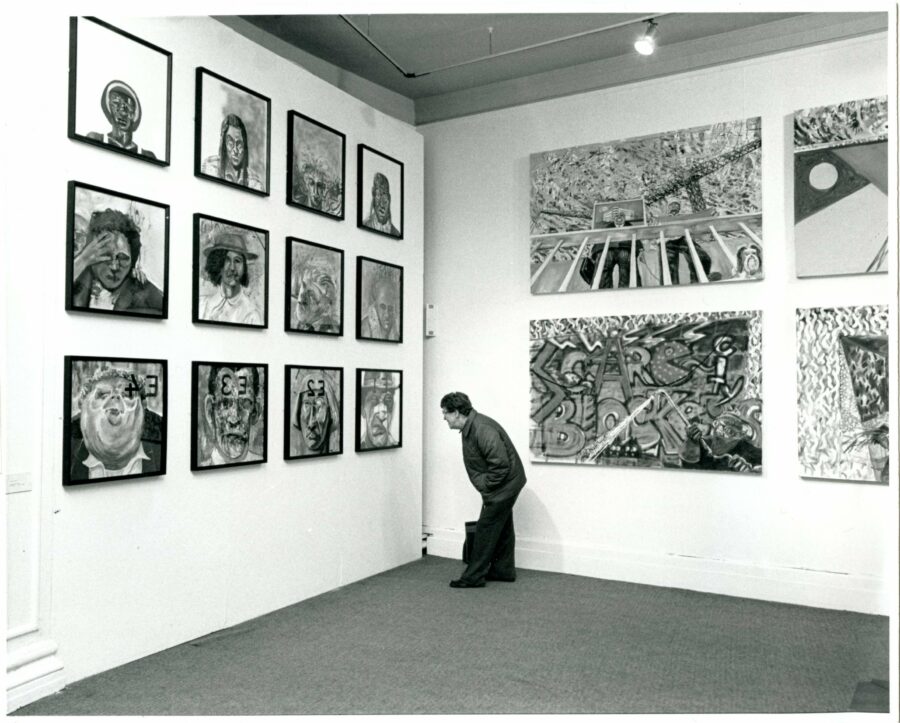
John was then teaching fine art in Leeds and had a parallel career as lead singer in post-punk trio The Three Johns whose records and incendiary performances caught the mood of the time in Britain with their critique of Thatcherism. The paintings in Connections had a similar punk aesthetic, picturing the post-industrial city chaotic and decaying, its inhabitants represented as ugly and awkward, echoing the caricatures of nineteenth century French satirist Honoré Daumier: ‘They juggle razor-blades and totter on the brink of entropy… (the paintings) illustrate a dynamic tension in our inner cities. Paint is in conflict with paint… dripping radiator enamel paint, splashed house paint and flaming car spray: the flood of conflicting urban stimuli’ (Elizabeth Rodgers and John Hyatt, Connections catalogue).
I’d first seen John’s work at Rochdale Art Gallery in 1984, the year that one of his paintings, Art Wars (the title of the Rochdale show) was chosen for the cover of the catalogue for Arts Council touring exhibition The British Art Show: Old Allegiances and New Directions 1979 – 1984. John’s inclusion in this high-profile national survey of new art reflected the emergence that decade of a generation of artists whose figurative, urgent, often confrontational work addressed ‘the representation of politics and the politics of representation,’ drawing on urban environments and a social fabric ravaged by the harsh economics of the time. This more socially engaged art practice developed in tandem with the burgeoning British Black Art Movement, and in this decade and into the 1990s both tendencies found a particularly receptive home in the exhibition programmes of galleries in the North and the Midlands, including the Bluecoat.
John was one of the artists I proposed for Tate Liverpool’s New North exhibition in 1990, a selection of work by artists living in the north of the British Isles, mostly in their thirties and forties, conceived ‘as a part of the public debate about regionalism – the more equal distribution of power and opportunities away from the metropolis to the regions’ (Lewis Biggs, exhibition curator). In the accompanying catalogue I described the rich vocabulary
John had at his disposal, using ‘irony to expose the hypocrisy of social institutions, the voice of the dispossessed to counter the politician’s rhetoric, parody to subvert the tenets of modernism, grotesque pictorialism to counter aesthetic tradition’.
John’s work presented at the Tate included a condensed version of his ongoing Leviathan opus, a grid of 70 one-metre-square paintings that presented a bewildering visual barrage, made more disorientating by an accompanying sound collage. Its title was taken from Thomas Hobbes’ analysis of the British state and absolute power published in 1651, and the paintings wove together themes from this and two other allegorical books, Herman Melville’s Moby Dick and Jonathan Swift’s Gulliver’s Travels, in a complex meditation on contemporary geopolitics.
An earlier iteration of this dizzying display was included in the Bluecoat’s North by North- West exhibition in 1989 at the BBK Gallery in Cologne, part of an exchange programme with Liverpool’s German twin city that ran for several years. Leviathan was also included in John’s solo show at the Bluecoat, Art in Chaos in 1990. A Bluecoat collaboration with two other Northern galleries, Cartwright Hall in Bradford and Cleveland Gallery in Middlesbrough, the show also incorporated The Printmaker’s Devil: The Life, the Letters and the Prints of Sir Stuart Farquhar R.A. (1897-1979), the result of John’s Henry Moore Printmaking Fellowship at Leeds Polytechnic.
Presented as an overview of the life of the fictional Sir Stuart, from the early twentieth century – ‘at the drypoint of madness’ – to the late 1970s, concluding with an intriguing letter to Andy Warhol, this ‘show-within-a-show’ was a device through which John explored history, pop culture, the authenticity of the artistic voice, and the development of printmaking as a democratic artform, from etching to the digital. It was irreverent and humorous and also demonstrated John’s versatility as a printmaker.


As part of the Bluecoat building’s 300 th birthday in 2017, an exhibition entitled Public View brought together 106 of our ‘alumni’ artists, including John who was represented by nine of the square portraits from the Connections exhibition. Presented alongside the work of other artists who’d shown at the arts centre, the work still looked fresh and powerful three decades after they were painted. And it was great to host a gig by The Three Johns (John, with John Langford and Phillip ‘John’ Brennan) in the gallery itself, opposite the paintings, with favourites like Death of a European and Sold Down the River being belted out.
Our tercentenary year also included a weekend dedicated to cult Californian rock musician Don Van Vliet, aka Captain Beefheart who’d first exhibited his paintings at the Bluecoat in 1972. The weekend included a symposium looking at Beefheart as ‘total artist’ whose work encompassed and interwove music, painting, writing and performance – in many respects similar to John’s own career. John participated in a panel discussion on Beefheart’s continuing legacy, as well as organising a terrific project at Make, a new creative space in the North docks.
Titled Ice Cream for Crow after a Beefheart song, this involved a workshop residency by art students from colleges in Dublin, Leeds, Liverpool, Manchester and Salford who were allowed to use only black and white in their work, a reference to Beefheart’s 1972 Bluecoat show where the paintings had a similar monochromatic constraint. The week-long workshop was transformational for the students, a much freer experience than they were used to and akin to the experimentation characteristic of an earlier art school framework. It ended in a celebratory open studio and music and live art performances by John Hyatt's Plastic Reality (with John in white face-paint), The Murmurists and Inland Taipan, and live art from Emrys Morgan.
The Bluecoat has been celebrating the life and work of the New Brighton-born author of modernist classic Under the Volcano, Malcolm Lowry since 2009 with an annual ‘Lowry Lounge’ programme of talks, walks, performances, publications and other activities. For the 2017 event John, working with design and innovation company Uniform, created an ingenious interactive installation at the Bluecoat, Shot Under the Volcano. Lowry’s book is set in Mexico on the day of the dead and features a shrine of the 'Virgin for those who have nobody with', which provided the inspiration for John’s installation.
This comprised an altar, at which the audience was invited to choose a shot from two bottles of clear liquid, one water, the other alcoholic. A uniformed 'official' was on hand to authorise participation, which was given on completion of an official form. Sensors then detected the participant’s preference, and design wizardry calculated their fortune by delivering a section of Lowry's novel chosen at random from a bank of digital sound clips narrated and recorded by John, who said of the work, 'like the book, this installation confronts opposites and tries to reconcile dualities.'
The 2018 Lounge, ‘Sounding Lowry’ had a musical theme, including an ‘Open Malc’ in which participants presented their homages to Lowry. John delivered a spellbinding 8-minute spoken word piece, with accompaniment from Thalia Styx on guitar. A synopsis of Under the Volcano was rendered in reverse, starting with the conclusion: the dead dog (that in the book is thrown down a ravine after the body of the main protagonist, The Consul) ‘flew out of the ravine into someone’s arms.’
The Lounges traditionally finish with a toast to Lowry. At the end of the 2019 event the empty mescal bottle used was filled with messages to a future love, or a love letter to someone who had passed away. This 'art ceremony’, The Bravest Bottle, was devised by John, inspired by Lowry's short story ‘The Bravest Boat’. The messages were written by Lounge attenders during 4 minutes 23 seconds of ‘silence’ while listening to a new piece of music by John and David Moss, Rise from the River. Later that evening, John threw the sealed bottle of messages into the Mersey, ‘which will bear our hearts out with the tide’, to be washed up on some distant shore.
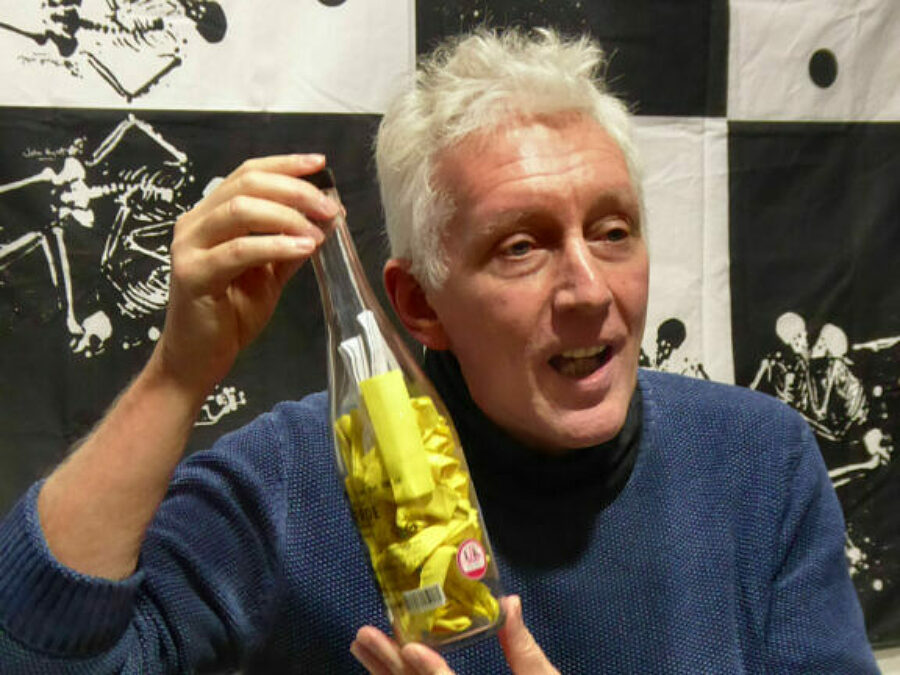
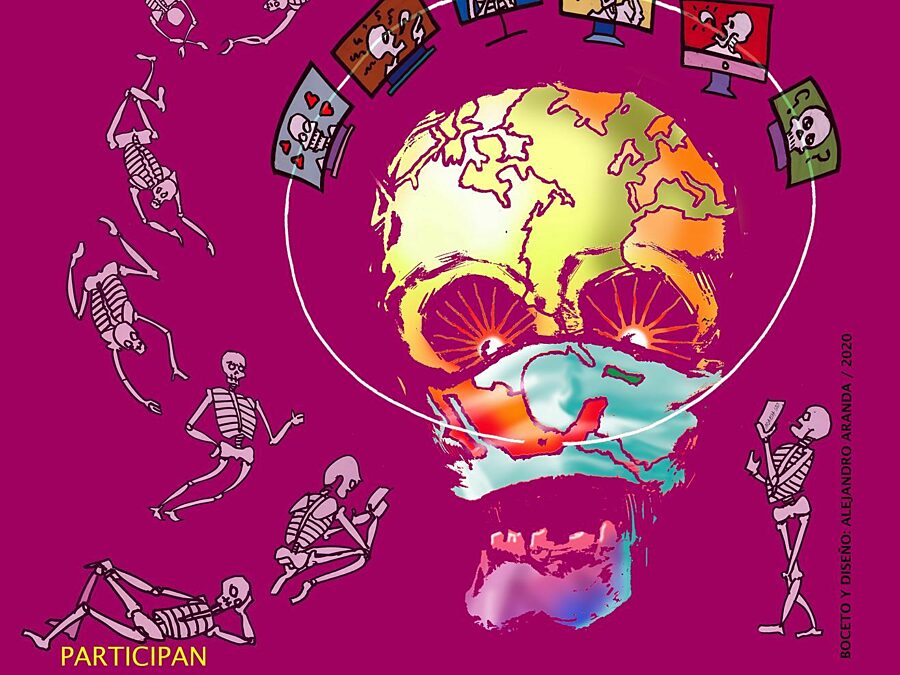
The 2020 Lounge was cancelled due to the pandemic lockdown however our Mexican colleagues in Cuernavaca, where Under the Volcano is set, who organise a Malcolm Lowry Colloquium proceeded with their annual event online. John was one of those invited to contribute alongside me and another Lounge regular, Ailsa Cox. Together we made a presentation on how we are celebrating Lowry in the place of his birth and John’s contribution was warmly received by the participants who’d zoomed in from all around the world.
John kindly allowed the beautiful printed fabrics he’d produced for his Lowry altar to be used at all the subsequent Lounges and each year, displayed at our gathering at the Bluecoat, they are a reminder of the wonderful contribution he has made to our programme. In 2019 John reflected eloquently in a piece of writing (‘Warning! This Vehicle is Reversing’) on one of his fascinations with Lowry’s famous book: ‘Under the Volcano plays with Time. Time meanders drunkenly through the novel, it stretches and it spirals in inebriated grammar, unmapped spaces, and suspect memories… Each manifest human individual, Lowry seems to suggest, is a planet careering drunkenly towards doom on a spiralling path gravitating towards their Destiny.’ Yet for John, life’s unpredictability, its detours and uncontrolled twists and turns were the riches to be harnessed through the artist’s imagination.
Continuing in prose as incandescent and thought provoking as his art and his music, John concluded that ‘the world we walk bursts like lava, solidifying temporarily from its patterns and its waves.’ Not just for those of us who knew and loved John, but I’m sure for many more who were touched by seeing his art or hearing his music, we were fortunate in experiencing his unbounded creativity and energy, his humour and dazzling spirit in the all too fleeting time he was among us.
Our thoughts and best wishes got to Liz, Tom and Elizabeth.
For further tributes to John:
https://www.theguardian.com/ar...
https://www.ljmu.ac.uk/about-u...
More images of John’s work at the Bluecoat:
